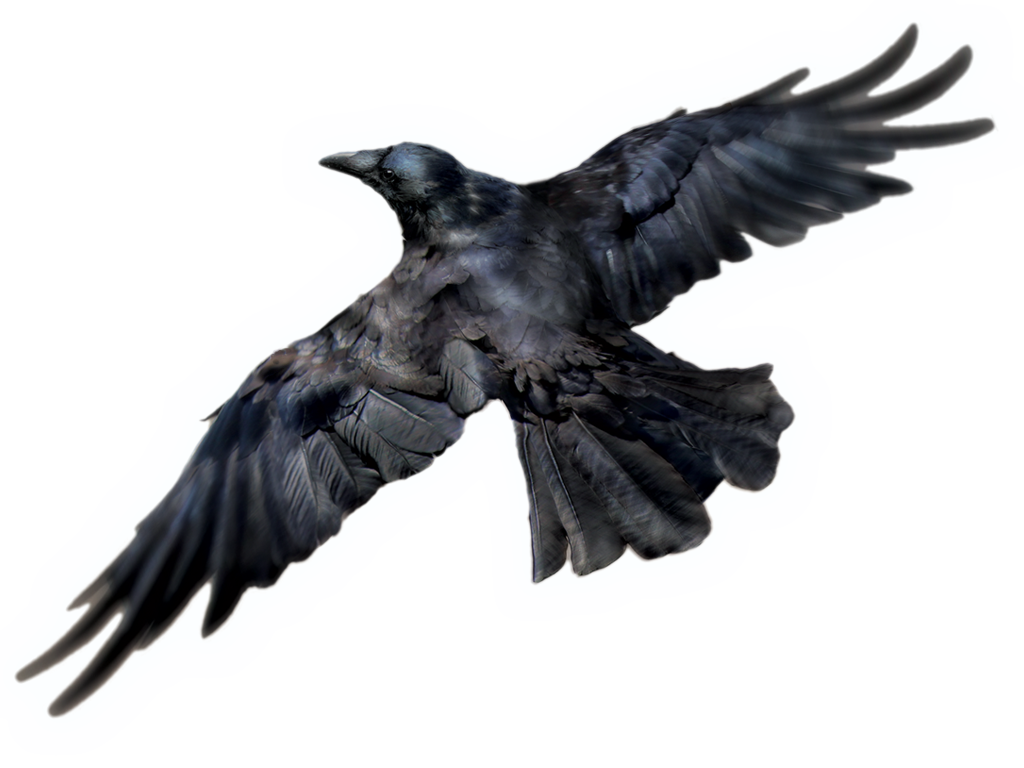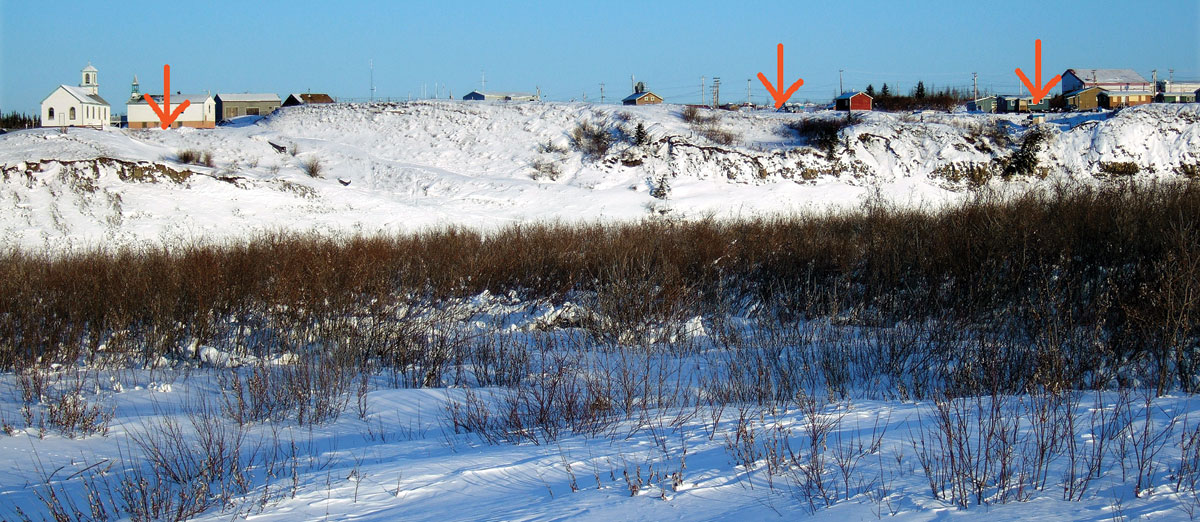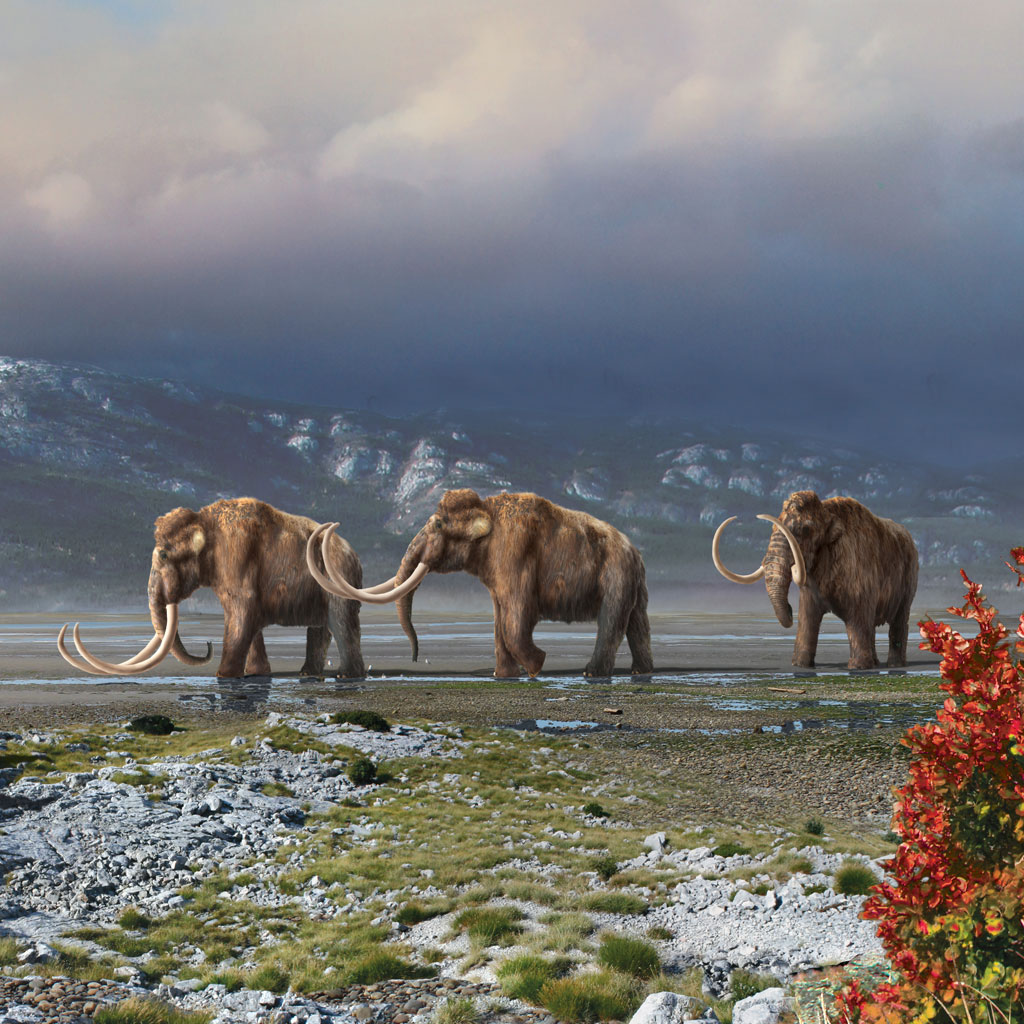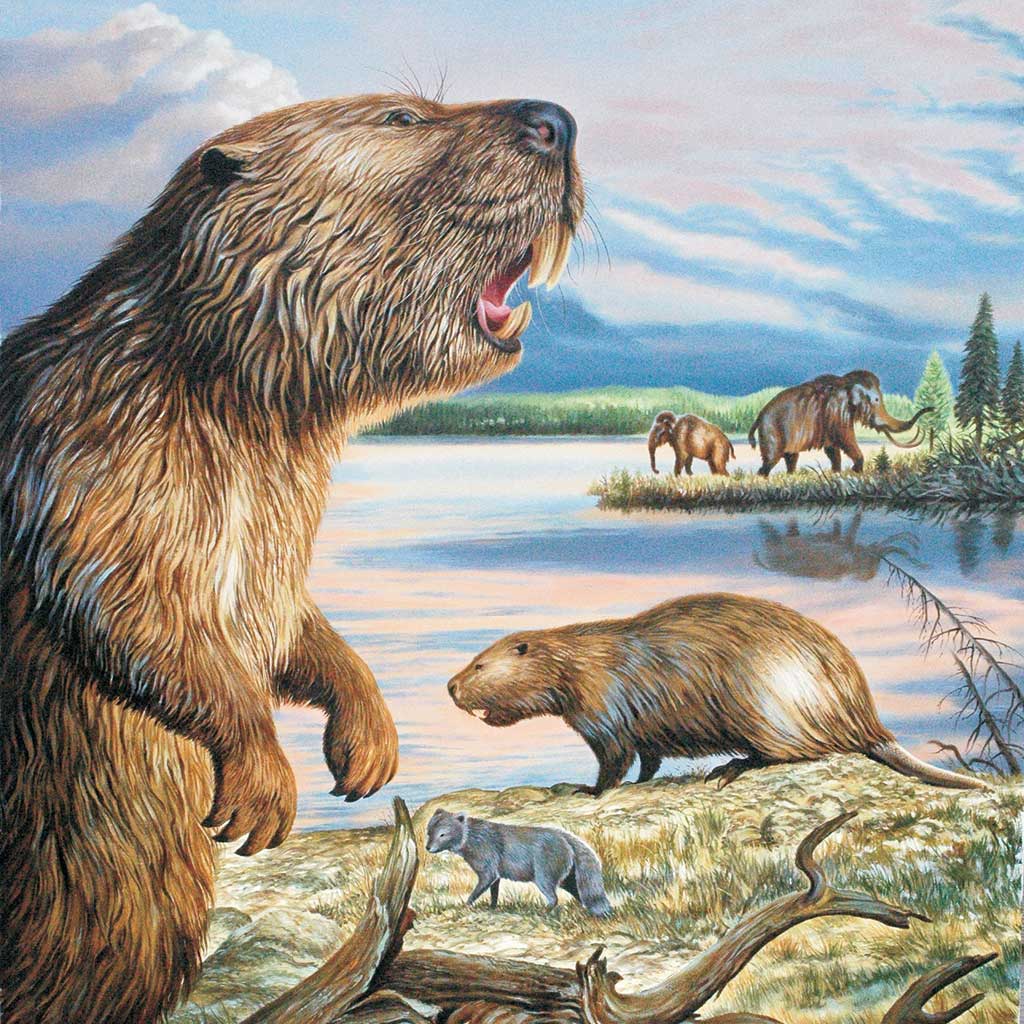Ancient Creatures, Ancient Stories
Deetrı̀n’ Ehchı̨ı̨ K’ı̀t • Raven’s Beds

The steppe bison remains were found near three distinct hollows in the bank of the Arctic Red River. To the Gwichya Gwich’in, these depressions are known as Deetrı̀n’ Ehchı̨ı̨ K’ı̀t, which translates as “Raven’s Beds.” Gwich’in stories about Raven come from a time when animals and humans could change their forms and talk to each other. They reveal Raven as a complex character – known for his magical powers and keen wit as much as for his vanity and ability to deceive.
In one of these stories, Raven, fuelled by his vanity, sets out to trick the grebes (diving waterbirds) into losing their beauty. While Raven is able to trick the grebes into singeing their beautiful feathers, he is caught by the grebes, horribly burned, and loses his beak. Deetrı̀n’ Ehchı̨ı̨ K’ı̀t is the place that Raven recovers from his wounds and plots how to get his beak back.
Listen to the Gwich’in legend of the Raven’s Beds, a traditional story originally told by Annie Norbert and voiced by Alestine Andre (English) and Karen Mitchell (Gwich'in).
The Mammoth and the Mouse
In another Gwich’in story from the time of Raven, a mammoth appears as an important character. In this story, a young man seeks advice from his father-in-law on where to find the materials to make arrows. The father-in-law, who is secretly planning the demise of the young man, sends him to the land of the great beasts to find bones for making arrowheads.
Faced with killing a mammoth, the young man asks a mouse for help, saying, “Little mouse, you run up that big animal’s back leg. Go in his rectum and chew along his spinal cord till you come to the main heart vein. You will get lots of food.”
The little mouse does this and kills the mammoth. To this day, you can still see tiny mouse tracks on the backbones of big animals.
After facing more challenges to collect arrow shafts and feathers, the young man makes an arrow and uses it to kill the evil father-in-law.
Atachuukąįį
Along with the Gwich’in, many other Dene tell stories of a distant time when giant beavers inhabited the landscape. These beavers were a great danger to the Dene, often using their giant tails to splash the water and upset canoes.
Atachuukąįį, a Dene culture hero, chased and killed the giant beavers in order to make the world safe for humans. Many landscape features in the NWT were formed by Atachuukąįį’s struggle against the giant beavers, and today are marked by place names that memorialize these events. Ice age fossils of giant beavers tell us that they were as big as black bears and had incisors (front teeth) that were more than 15 cm long. Along with mastodons, mammoths, and many other ice age species, giant beavers went extinct around 10,000 years ago.



